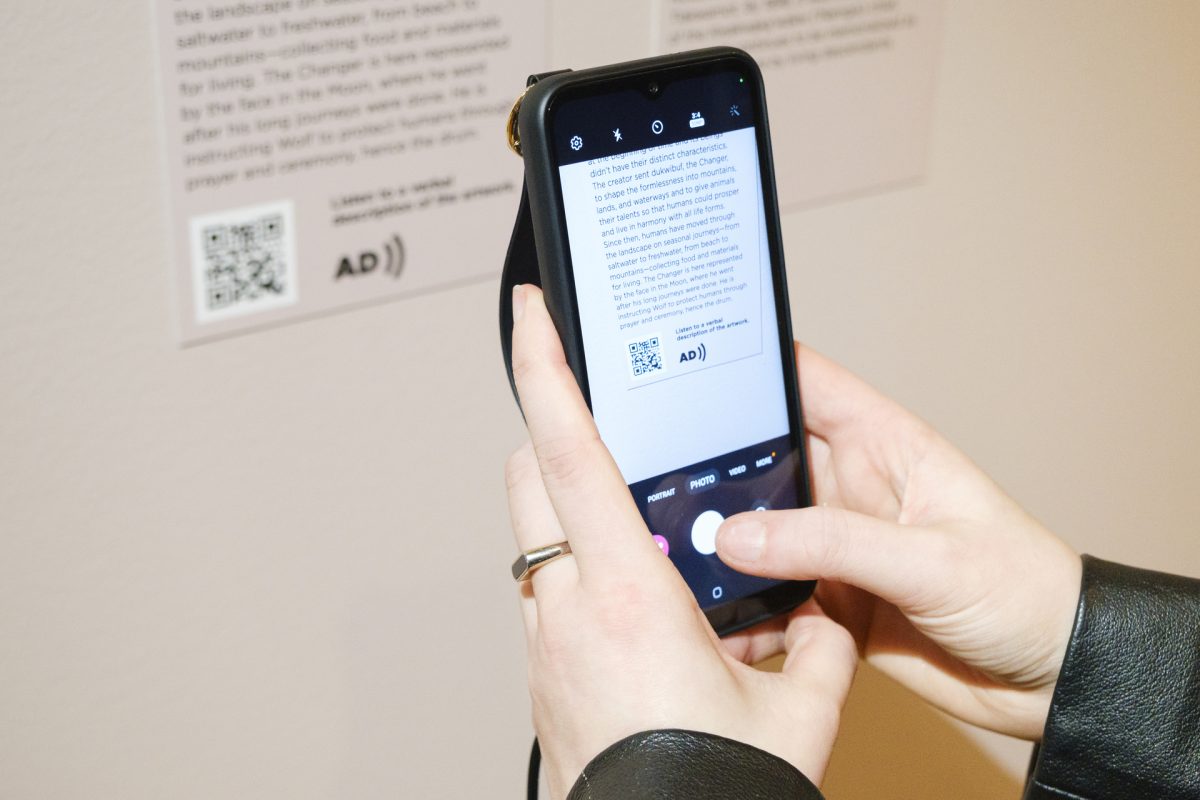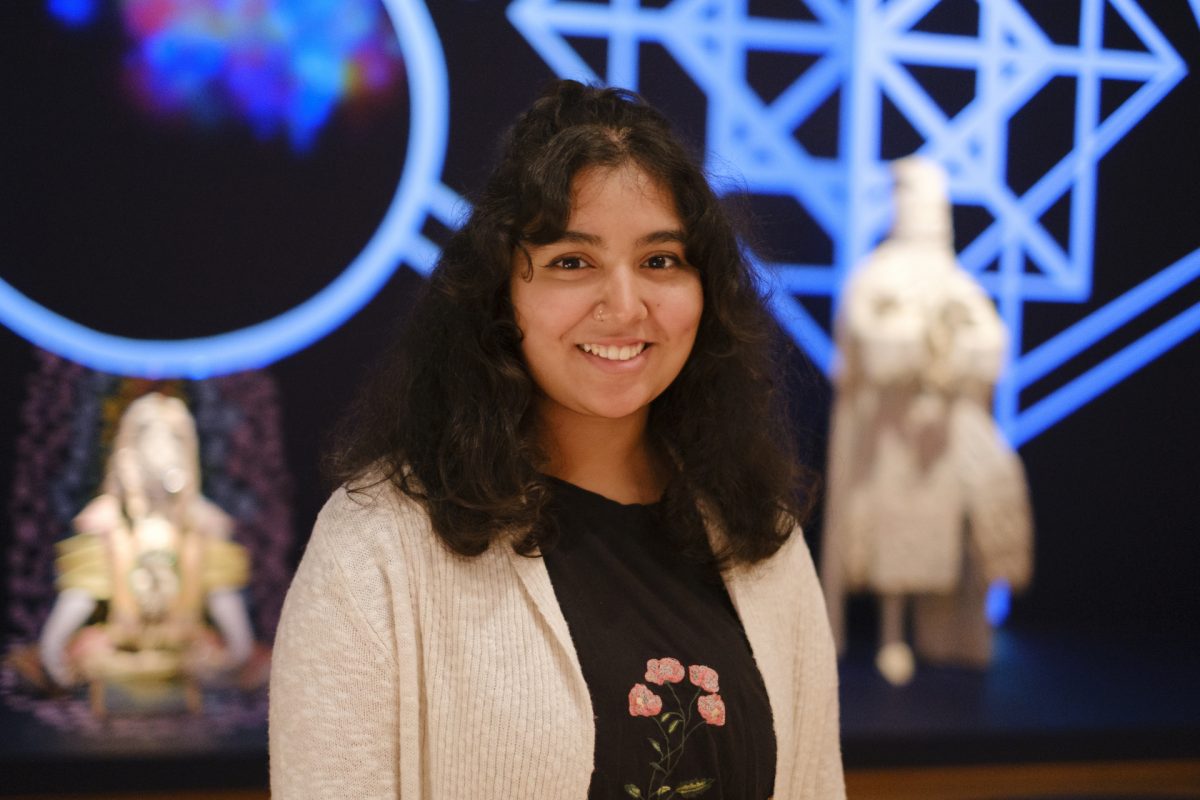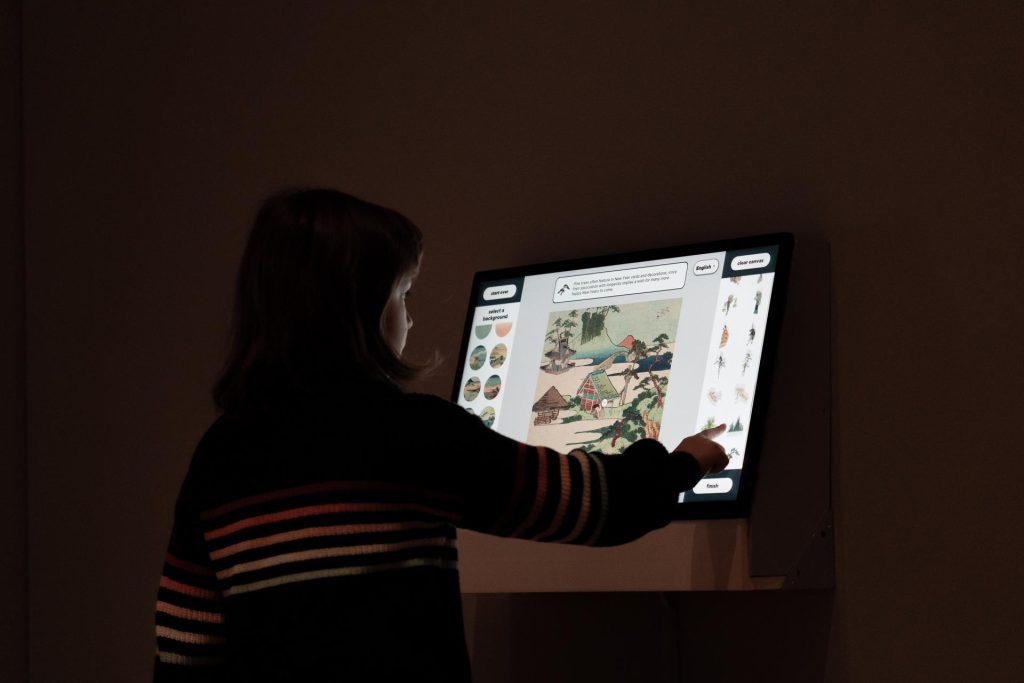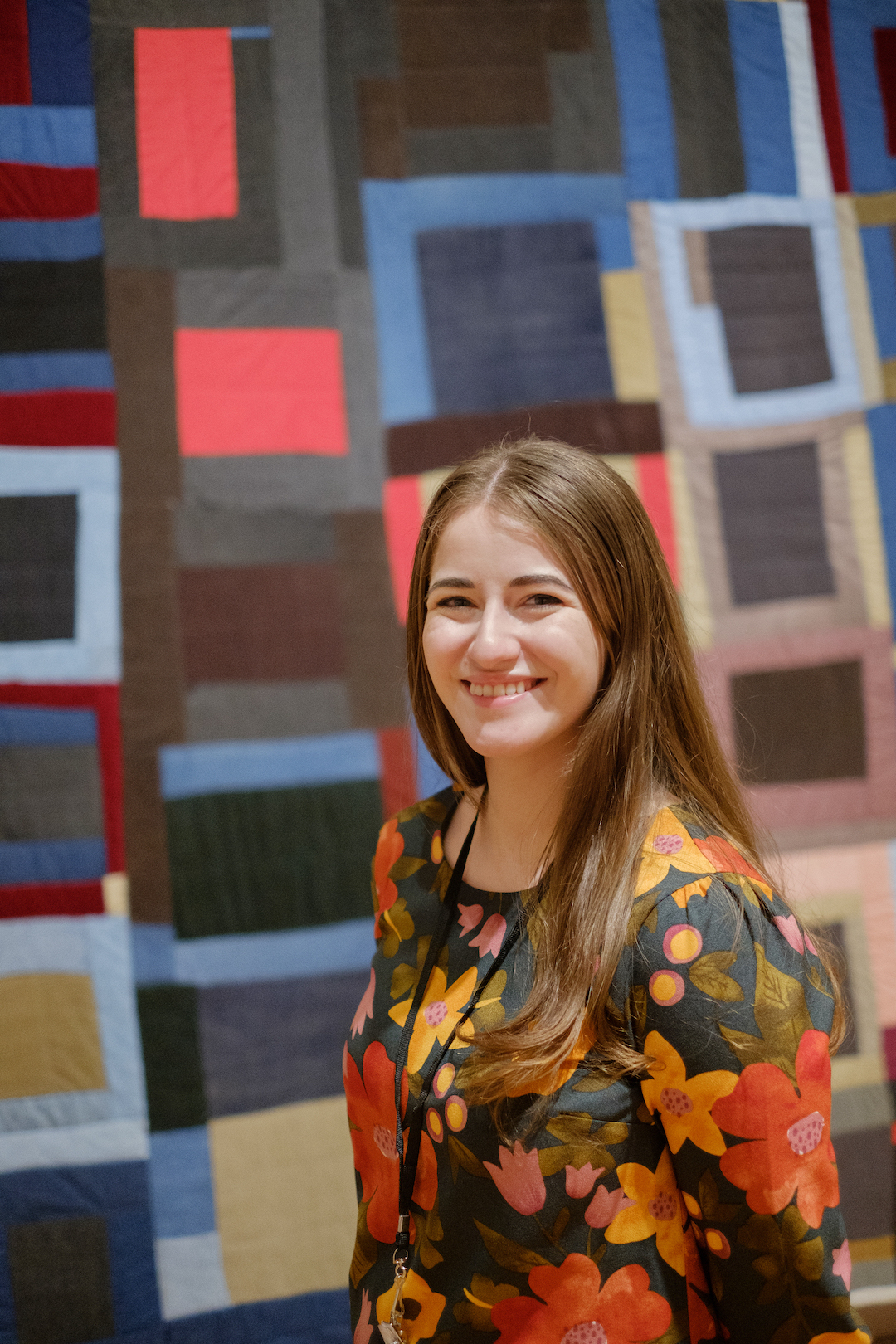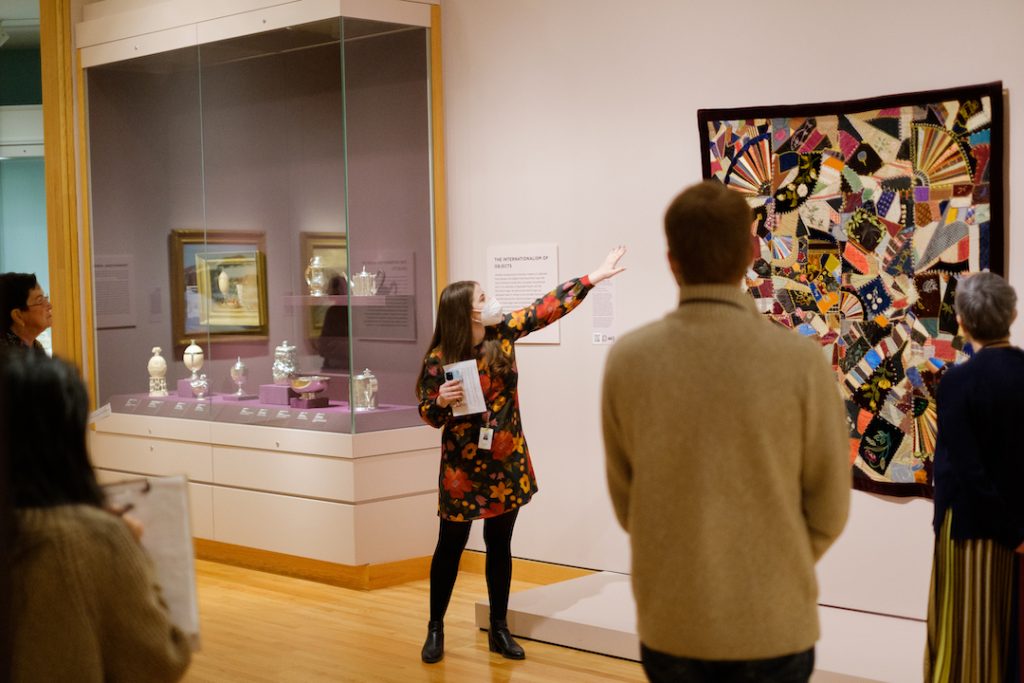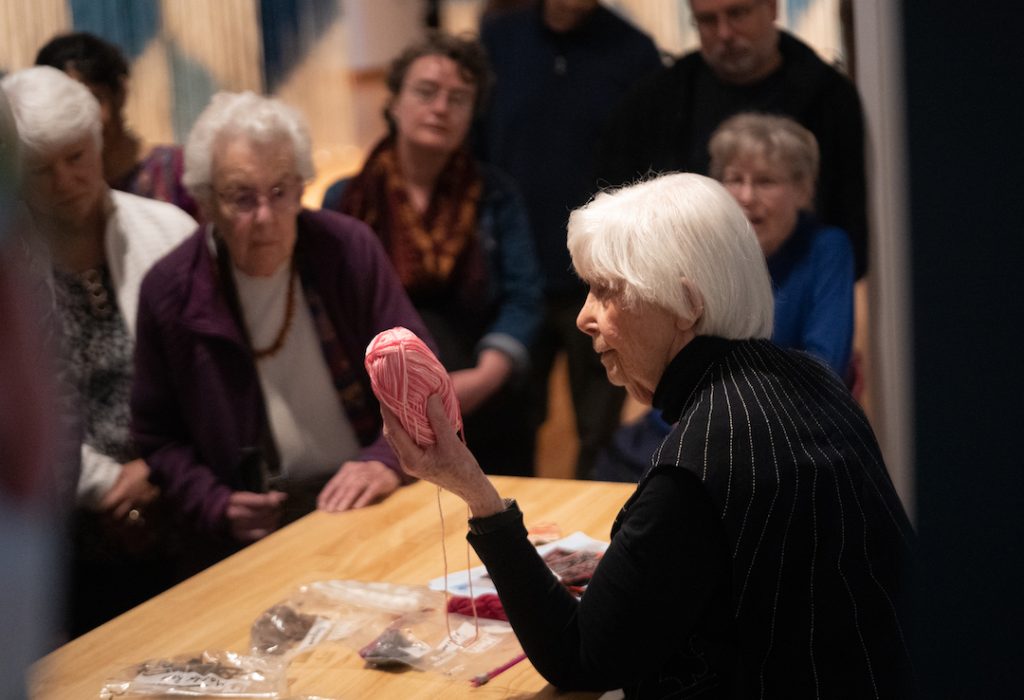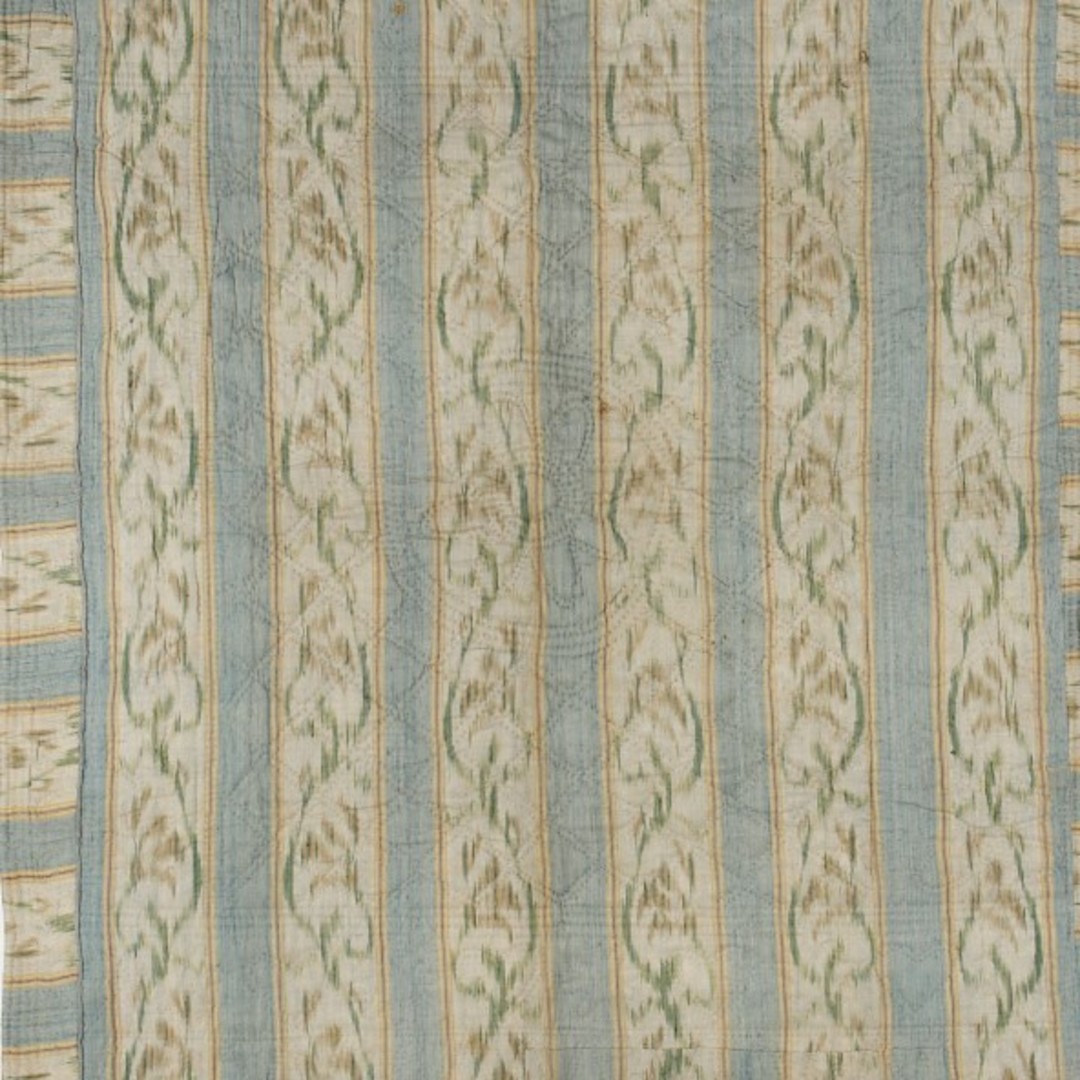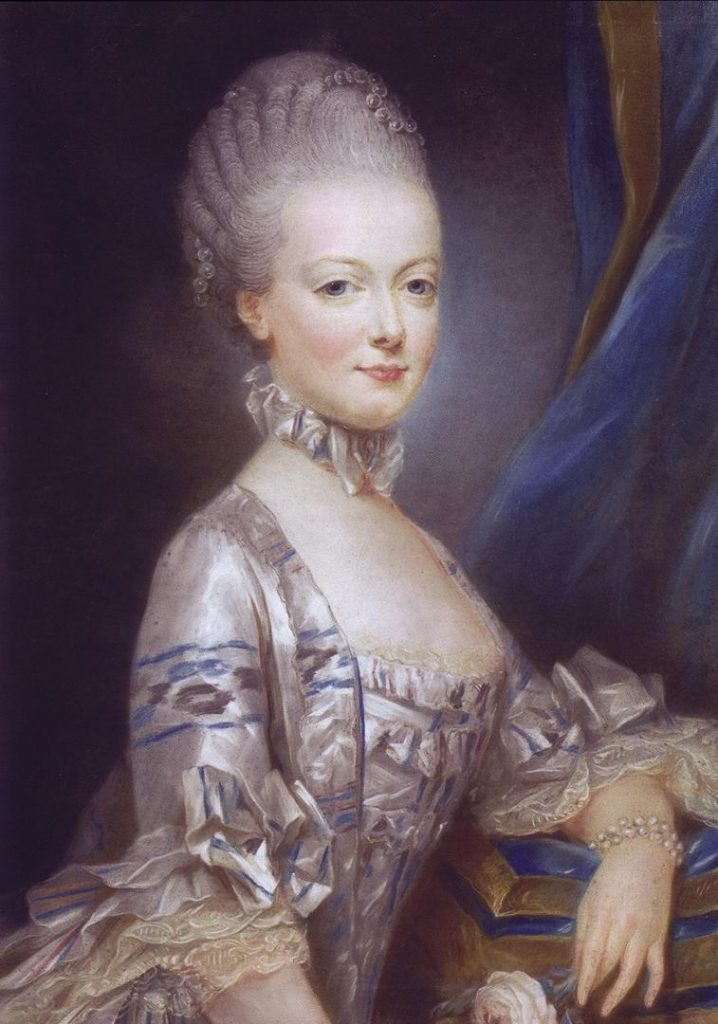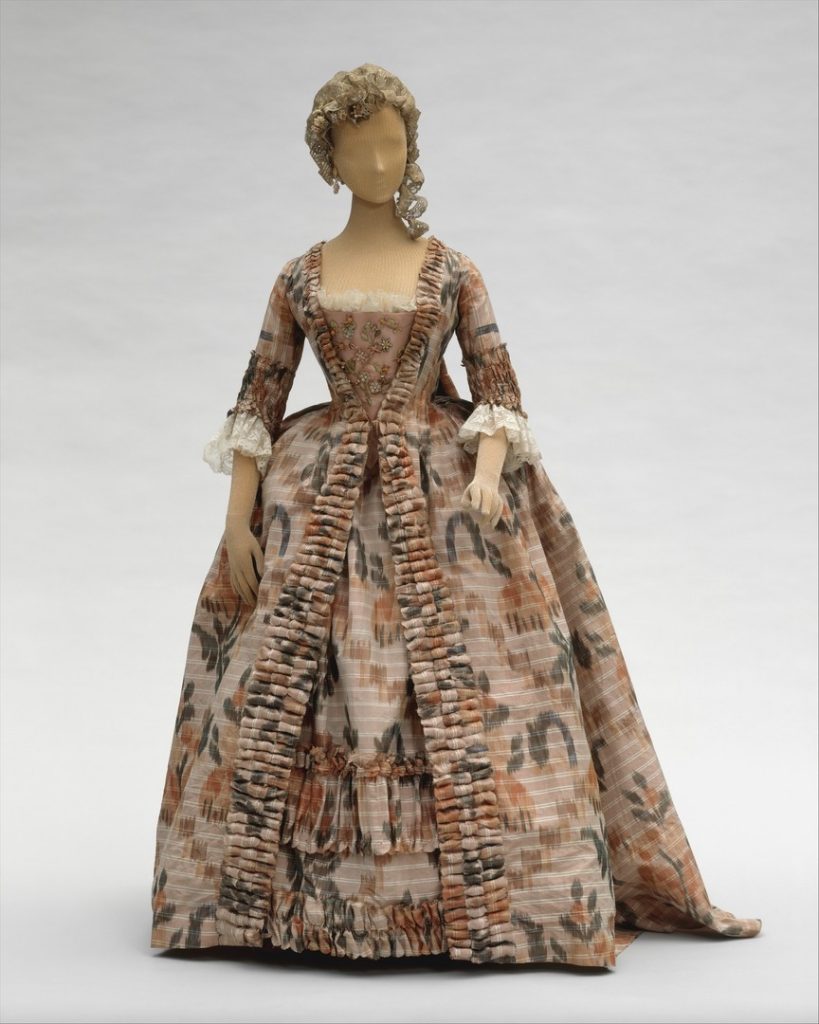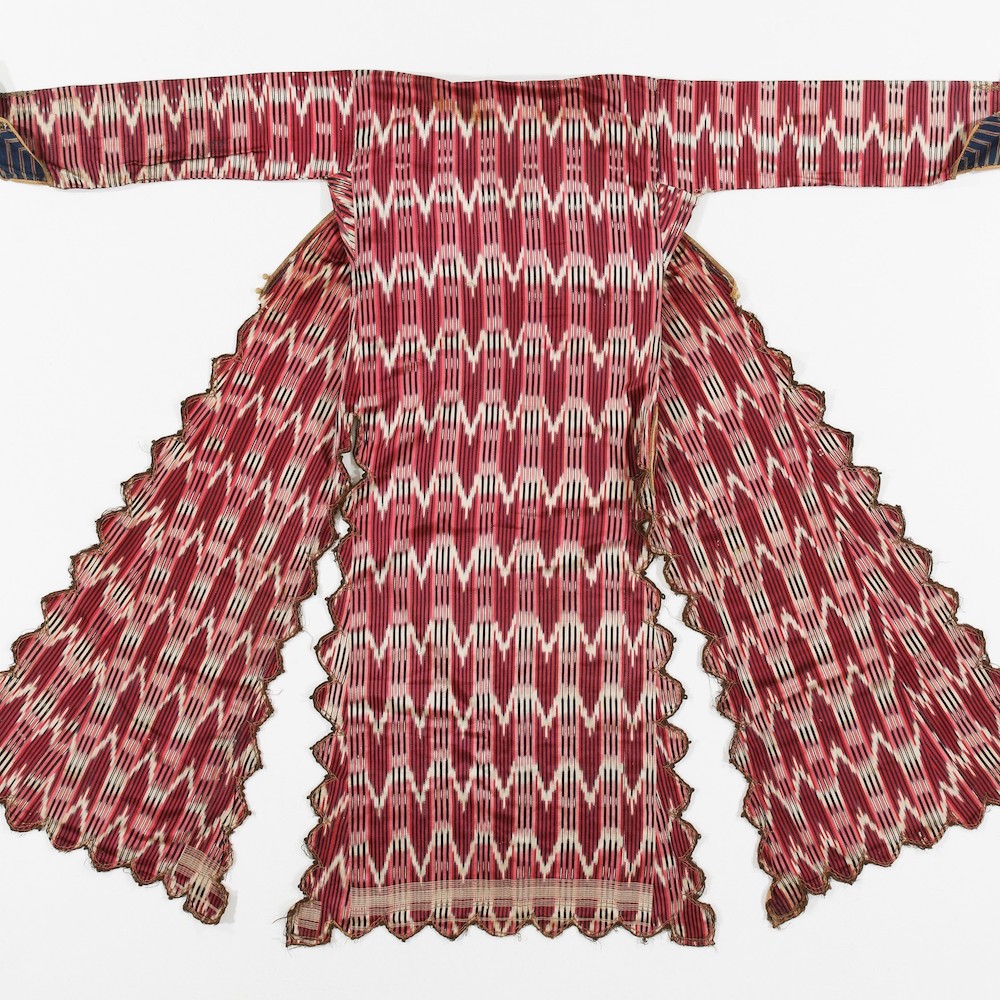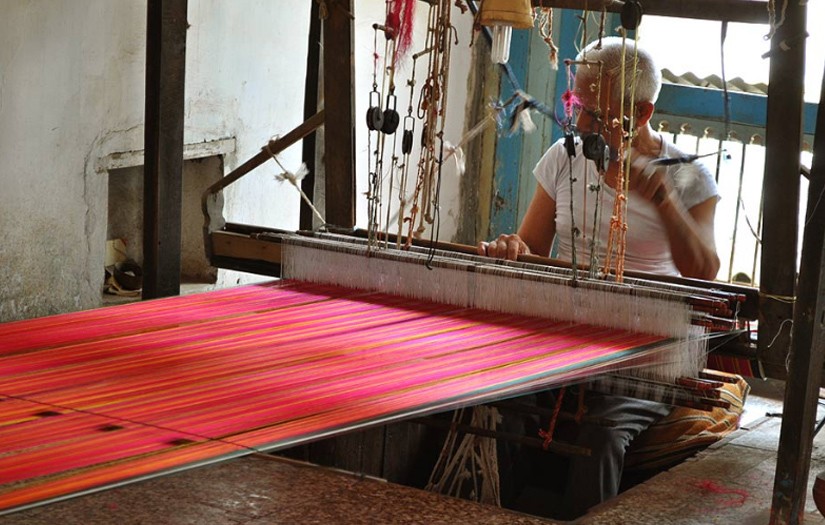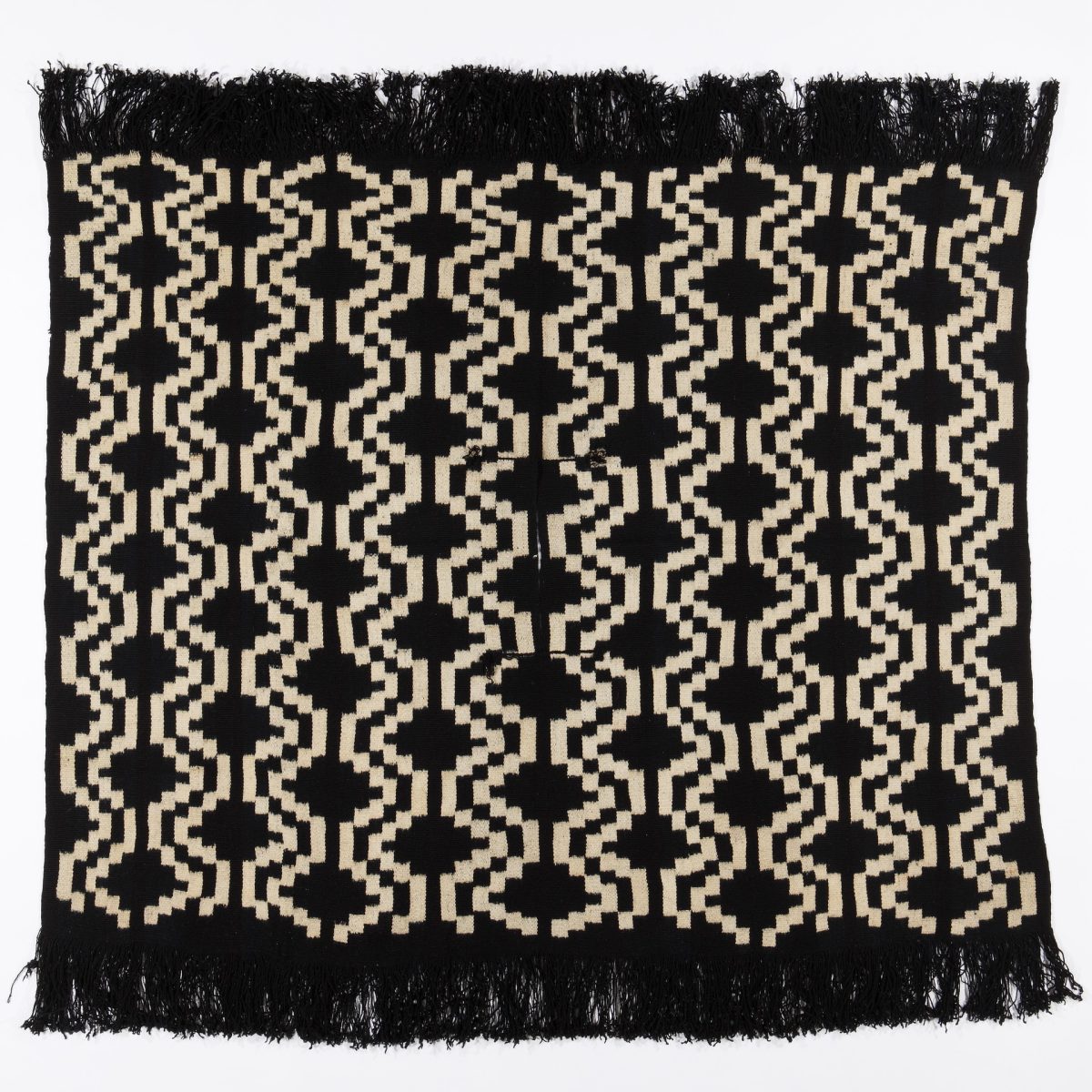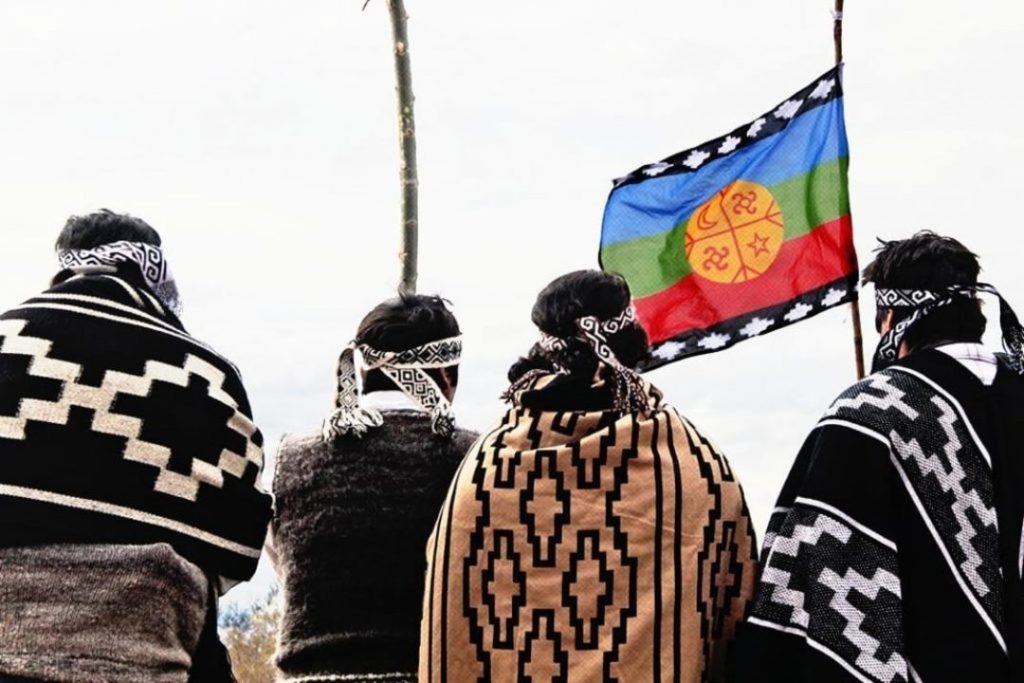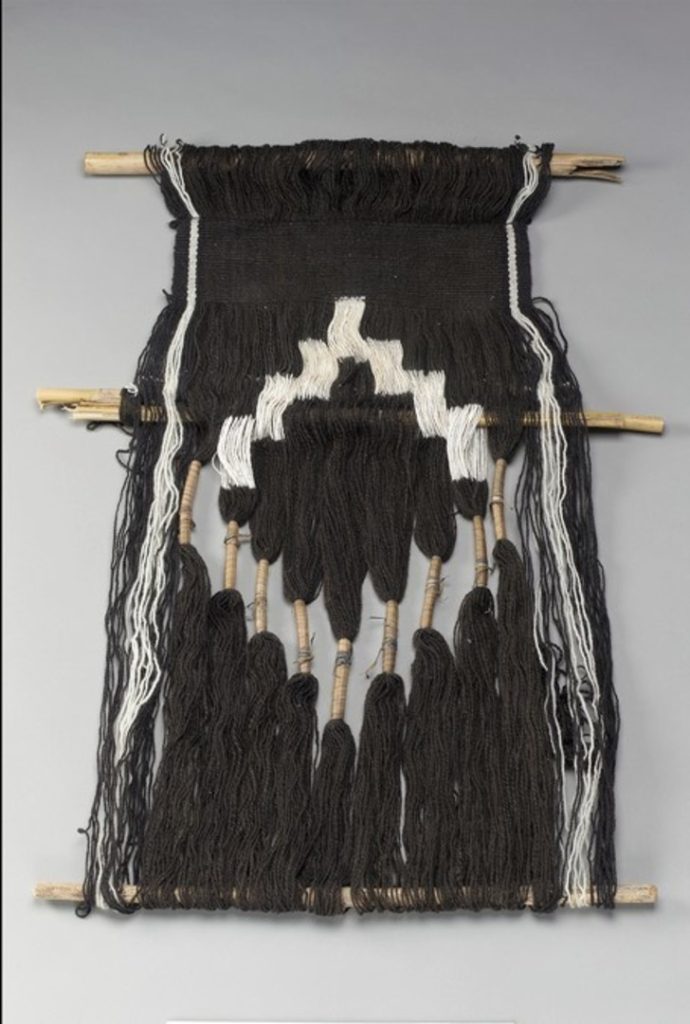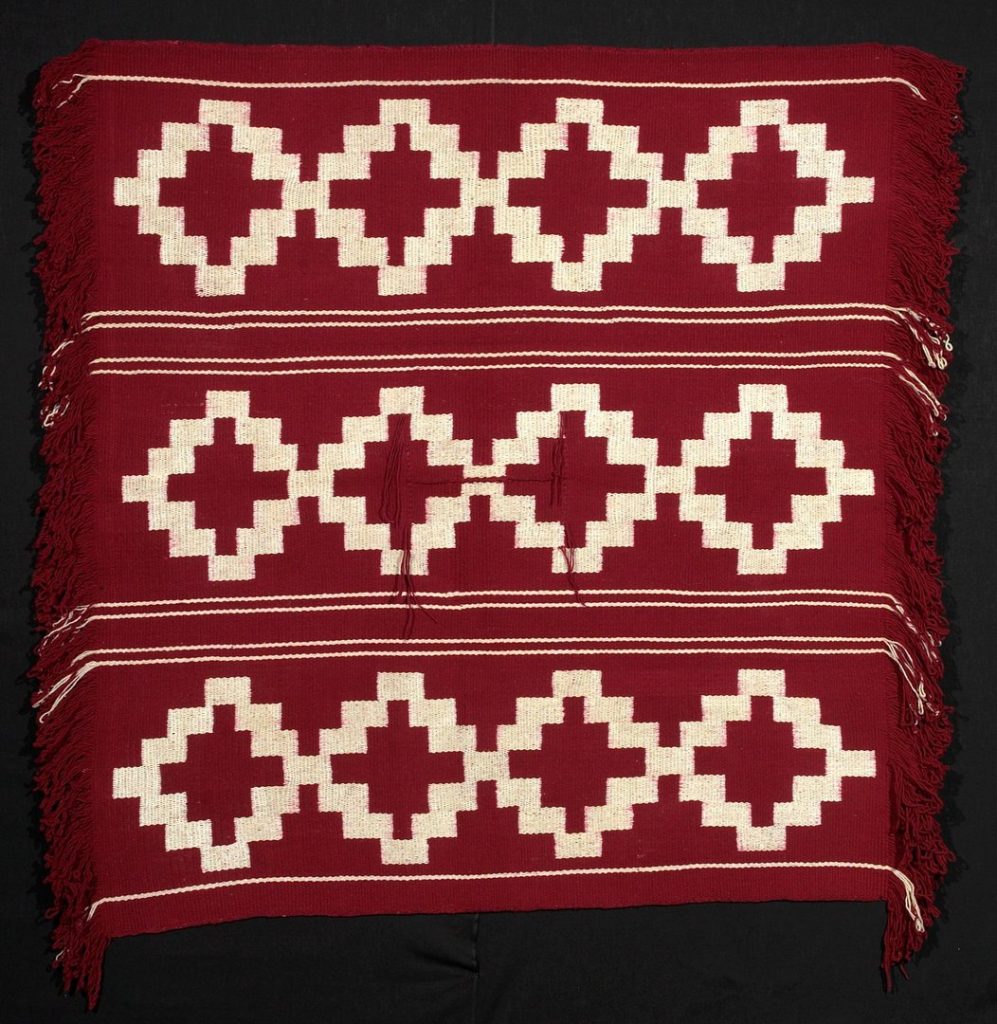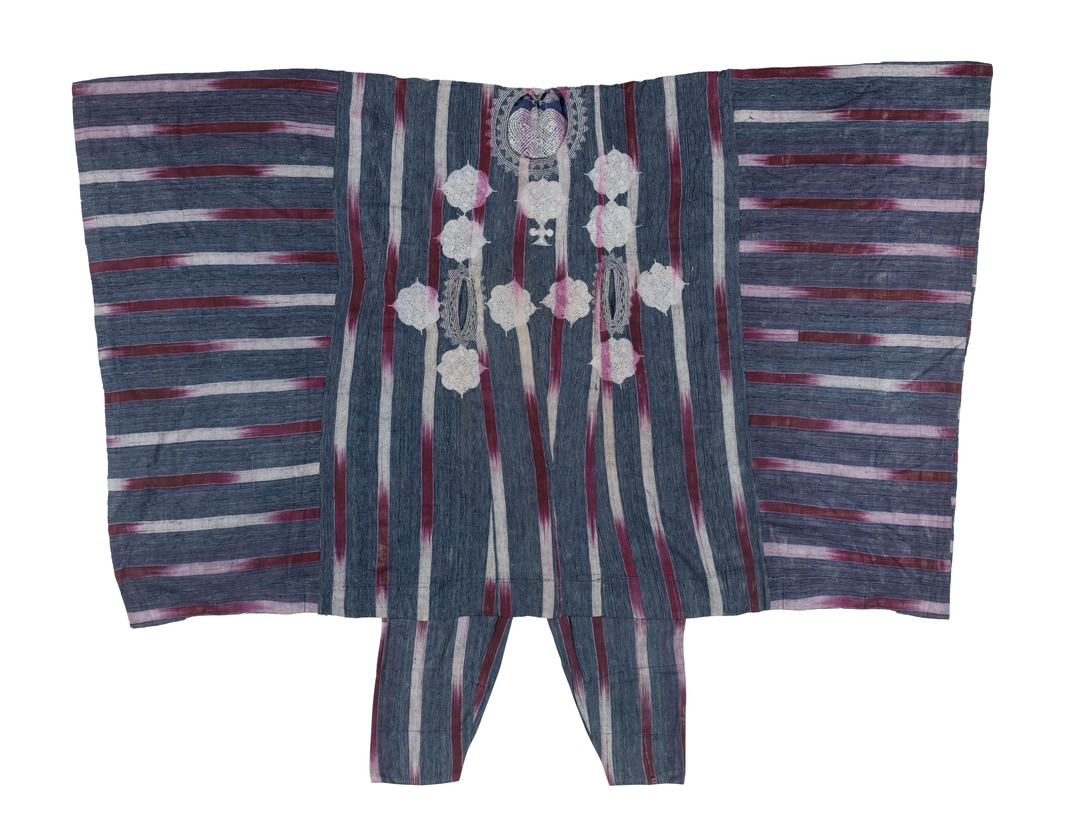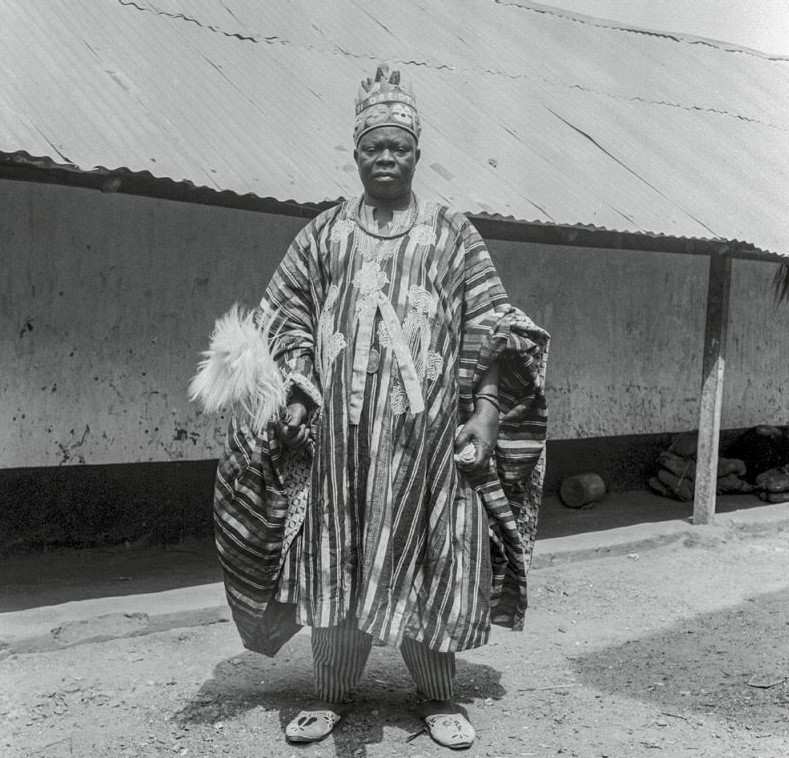Connecting Art to Life in Every Way: Accessibility Updates from SAM
“This bronze sculpture of a seaweed stalk sits on a freestanding pedestal a few feet off the ground. The overall shape is abstracted, made of rounded, wavy, leaf-like shapes. The surface color is a dark, chocolatey brown that blends with lighter patches of deep caramel. As you move around the sculpture, the color shifts as light reflects off the patina from different angles.”
This is an excerpt from the verbal description for the collection work Mo (Seaweed) (1977) by George Tsutakawa. These detailed audio explanations bring artworks to life for visitors with low or no vision and are available for smartphones via QR codes.
With the guidance of an accessibility trainer and contributions from community members—including SAM Visitor Experience Representative Derek Bourcier and former SAM docent Donnie Wilburn—we’ve revamped our production of verbal descriptions. In addition to creating them for many artworks in special exhibitions, such as Jaune Quick-to-See Smith: Memory Map and Calder: In Motion, The Shirley Family Collection, we are also working to create them for collection galleries such as American Art: The Stories We Carry at the Seattle Art Museum and Boundless: Stories of Asian Art at the Seattle Asian Art Museum.
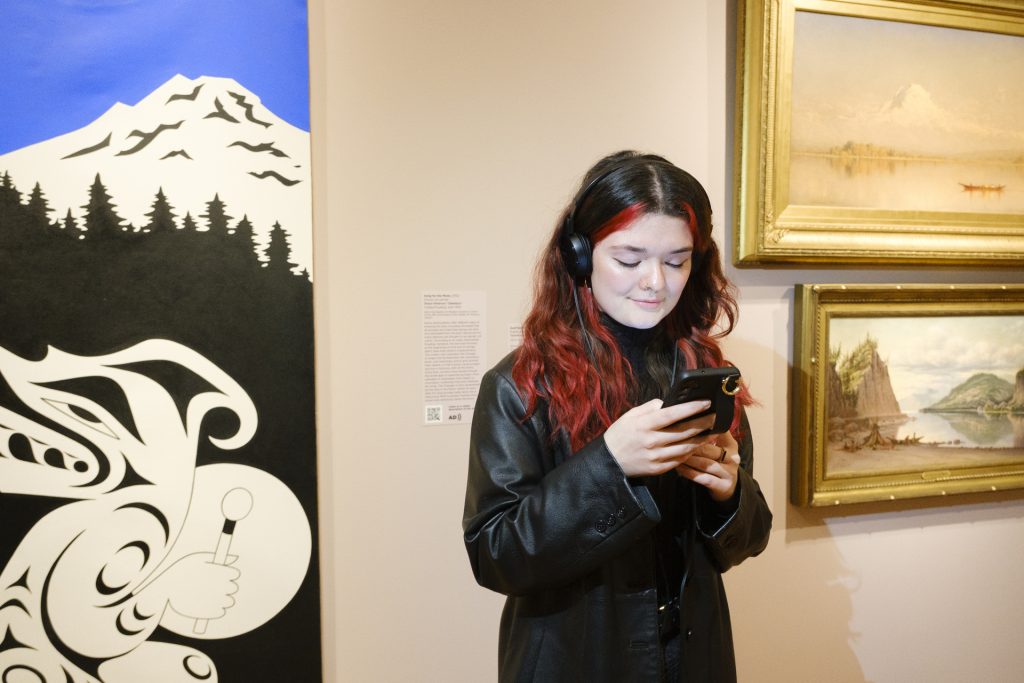
“We want our verbal descriptions to meet the needs of the people they’re serving,” says Ramzy Lakos, SAM Museum Educator for Digital Learning, who leads their development. “The goal is to have one for every artwork on view. We get a little closer to achieving that every year.”
In addition to verbal descriptions, the museum offers large-print copies of the object labels for select exhibitions as well as transcripts of all smartphone tours. SAM also offers ASL interpretation upon request. At Coat Check, visitors can borrow baby carriers and strollers, canes, stools, wheelchairs, disposable magnifying glasses, earplugs, large-print maps, colorblind glasses, a text telephone device, and Android phones with headphones for accessing online audio tours and descriptions.
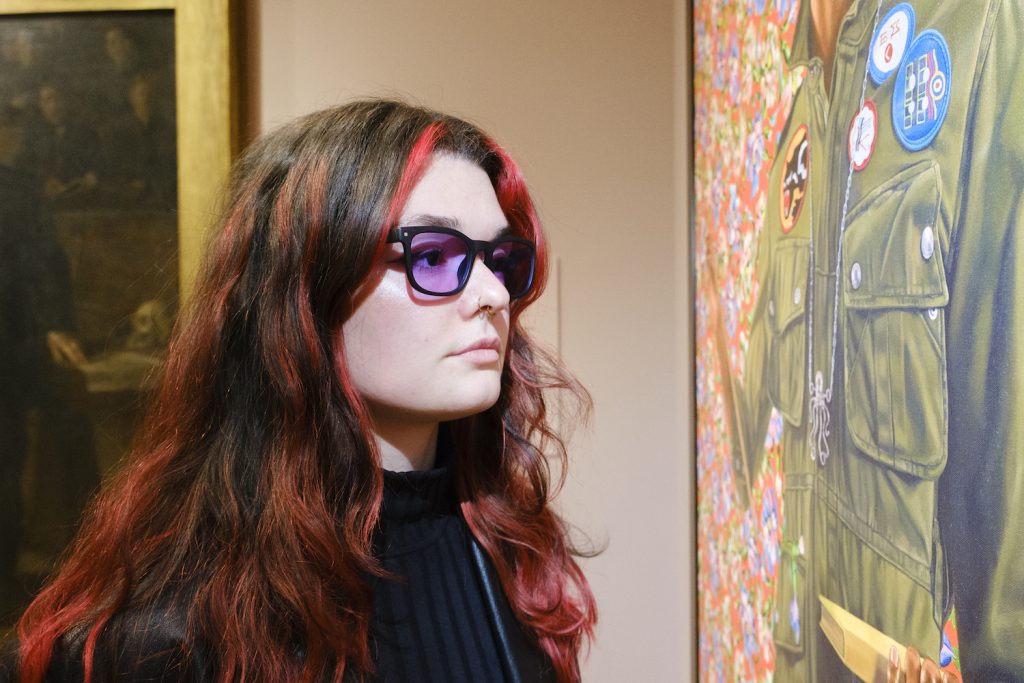
“It’s all about progress,” says SAM Visitor Experience Manager Chelsea Leingang. “It’s about acknowledging that SAM can do better and actively working to make the artwork in our galleries more accessible to visitors.”
Check out visitsam.org/accessibility or call us at 206.654.3210 for more information about our accessibility options, to request accommodations, or obtain a large-print version of SAM magazine.
– Lily Hansen, SAM Marketing Content Creator
This article first appeared in the February through May 2024 edition of SAM Magazine and has been edited for our online readers. Become a SAM member today to receive our quarterly magazine delivered directly to your mailbox and other exclusive member perks!
Photos: Alborz Kamalizad.
